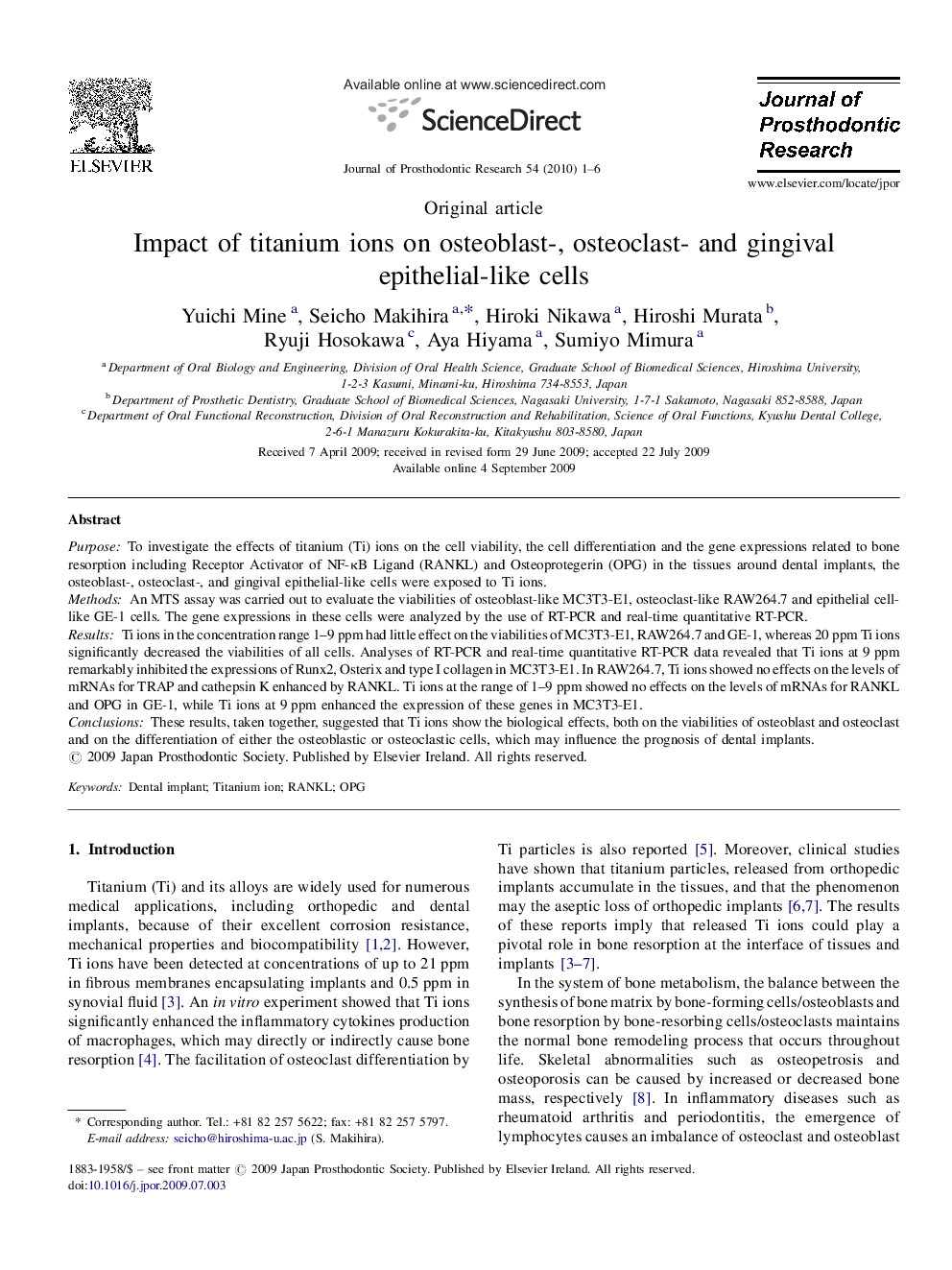| Article ID | Journal | Published Year | Pages | File Type |
|---|---|---|---|---|
| 3160710 | Journal of Prosthodontic Research | 2010 | 6 Pages |
PurposeTo investigate the effects of titanium (Ti) ions on the cell viability, the cell differentiation and the gene expressions related to bone resorption including Receptor Activator of NF-κB Ligand (RANKL) and Osteoprotegerin (OPG) in the tissues around dental implants, the osteoblast-, osteoclast-, and gingival epithelial-like cells were exposed to Ti ions.MethodsAn MTS assay was carried out to evaluate the viabilities of osteoblast-like MC3T3-E1, osteoclast-like RAW264.7 and epithelial cell-like GE-1 cells. The gene expressions in these cells were analyzed by the use of RT-PCR and real-time quantitative RT-PCR.ResultsTi ions in the concentration range 1–9 ppm had little effect on the viabilities of MC3T3-E1, RAW264.7 and GE-1, whereas 20 ppm Ti ions significantly decreased the viabilities of all cells. Analyses of RT-PCR and real-time quantitative RT-PCR data revealed that Ti ions at 9 ppm remarkably inhibited the expressions of Runx2, Osterix and type I collagen in MC3T3-E1. In RAW264.7, Ti ions showed no effects on the levels of mRNAs for TRAP and cathepsin K enhanced by RANKL. Ti ions at the range of 1–9 ppm showed no effects on the levels of mRNAs for RANKL and OPG in GE-1, while Ti ions at 9 ppm enhanced the expression of these genes in MC3T3-E1.ConclusionsThese results, taken together, suggested that Ti ions show the biological effects, both on the viabilities of osteoblast and osteoclast and on the differentiation of either the osteoblastic or osteoclastic cells, which may influence the prognosis of dental implants.
